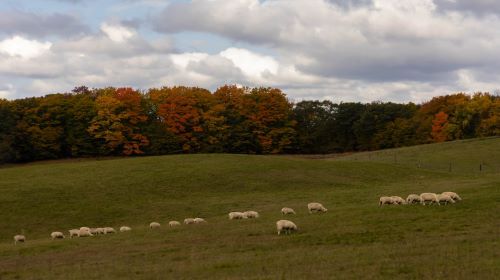
21 October 2022
The National Drought Group forecasts that drought is likely to persist beyond Spring 2023 in England. Lack of moisture in soils has already impacted farmers and the water available for them to irrigate crops this year. With low rainfall over winter, the refilling of farm water storage and soils will be constrained.
A government review of farm tenancies has been published. The Rock Review provided recommendations that would allow tenant farmers to support the environment including soil health and produce food. They recommend that the government ensures the Environmental Land Management Schemes (ELMS) are made accessible and open to tenant farmers, as well as looking to ensure new ecosystem markets in agriculture do not lead to the displacing of tenant farmers from land.
Tony Juniper, the Chair of Natural England has written to the Secretary of State for Environment, Food and Rural Affairs, Ranil Jayawardena to urge for the Environmental Land Management Schemes (ELMS) to be maintained. He stated in his letter that if the government does not support farmers to replenish soil, it will not meet its legally binding target to halt biodiversity decline by 2030.
WWF has shown that nature is being depleted with wildlife populations plummeting by 69%, in their latest Living Planet Report. It highlights that indirect impacts of human actions on ecosystems are not being considered especially in economics, with the focus on soils often emphasising excessive use of agrochemicals and the need for conservation but de-incentivising soil damage in markets. Soils are also becoming a major source of carbon emissions due to erosion.
The Wildlife and Countryside Link has published its report on the UK’s progress towards helping conserve 30% of the planet by 2030 (30x30). The report shows that only 3% of land in the UK is effectively protected for nature. In response to the report, Craig Bennett, CEO of the Wildlife Trusts stated that the report showed a lack of progress and a weakening of support for nature-friendly farming could make the path to 30x30 harder and threaten soil health.
New guidance has been issued by the AHDB on the Soil Health Scorecard. With the scorecard breaking down soil health into measurable parts for farmers to use in improving their crops and grassland, the guidance includes explanations on how to undertake ‘sound’ soil sampling as part of the scorecard.
Linking Environment and Farming (LEAF) have released their latest Marque Standard. The standard is used to assess food producers and accredits farms with good environmental management. Included in the latest standard is a consideration of soil health, nutrient management, and developments in carbon sequestration.
A new study has looked at the impact of different climate phenomena on Australian wheat yields. It has highlighted that since the 1980s, the varied nature of the Indian ocean and the climate it affects, is having a major impact on wheat yields. Through the Indian Ocean Dipole (irregular movement in sea surface temperatures), the climate is changing and affecting soils, with a need for farmers to have a good understanding of soil health in order to mitigate these effects.
Last Saturday the Good Food Good Farming march took place in London which the documentary-makers, Six Inches of Soil attended and wrote about. It urged the government to keep and fund the Environmental Land Management Schemes (ELMS) combined with other key food-focused campaigns including the Right to Food and GM Freeze, which respectively advocate for a law that guarantees everyone’s right to food and against GM being used in agriculture.